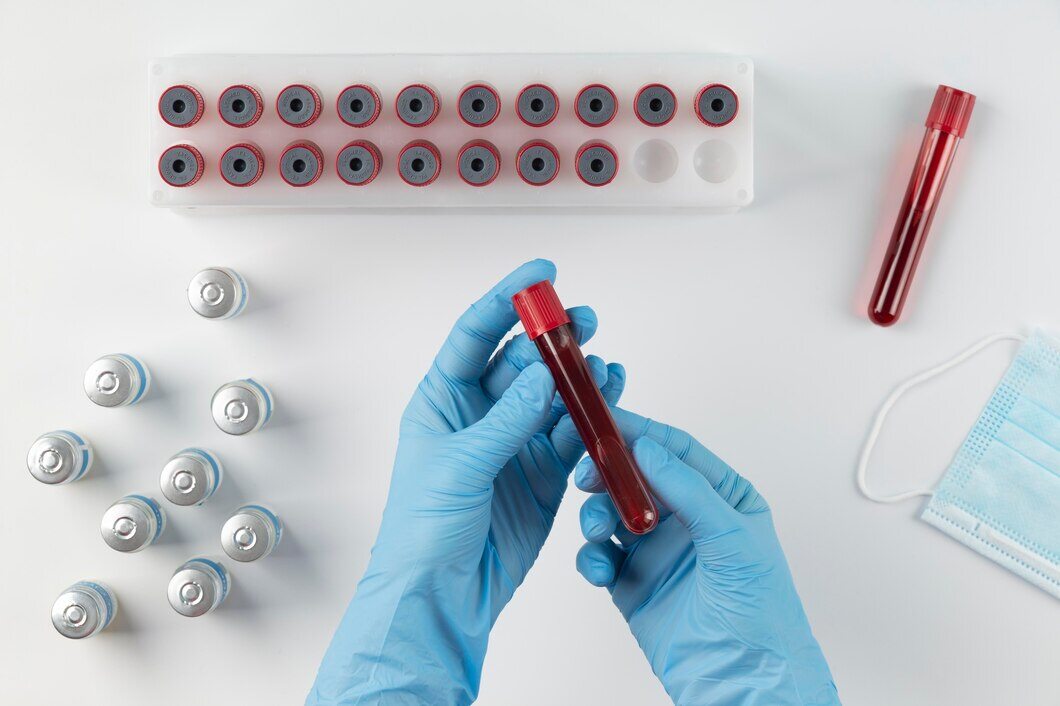Conventional vs. Functional Blood Testing
Blood tests are a fairly routine part of a visit to the doctor used to both assess the current state of your overall health as well as explain unusual symptoms you may be experiencing.
By analyzing your blood chemistry, doctors can identify dysfunction in the production of white and red blood cells, cholesterol and hormones, as well as unusual levels of vitamins and minerals, blood sugar, protein and inflammation, among other things. Conventional medical doctors do this by seeing where your levels fall within a predetermined pathological range.
When levels are high or low outside of this range, doctors can diagnose certain medical conditions and begin treatment.
Sounds great, right? Well, yes, if you’re sick.
But what if you go to the doctor with symptoms, or a general feeling of being unwell, yet your bloodwork checks out? Chances are you’ll either be sent on your way with instructions to return if things get worse, or given prescription meds — even antidepressants — to alleviate symptoms, but no explanation as to what is causing them.
That’s because conventional blood tests — conventional medicine in general — is geared towards diagnosing disease once it is present, not preventing it in the first place.
Pathological Versus Functional Ranges
There are two main types of ranges in the field of blood chemistry analysis: a pathological range and a functional range.
The pathological range is used to diagnose disease, while the functional range is used to assess risk for disease before disease develops. The references that are provided with laboratory test results are referred to as the “the pathological range.” If the test results are out of range, it usually indicates the potential for pathology or disease.
It is important to understand the main difference between the functional and pathological range is the degree allowed within their normal ranges. For example, the functional range for glucose may be 85-100 mg/dl, but the pathological range may be 65 -110 mg/dl. Levels above the pathological range may indicate diabetes. Levels above the functional range, but before they reach the extremes of the pathological range, may indicate insulin resistance and future risk for developing diabetes.
Essentially, looking at the functional levels offers a comprehensive view of health and operation within the body systems.
Functional Medical Testing Is Different
Doctors who are trained to analyze a patient’s blood chemistry within a functional range look at results through a much narrower lens, noting results within a smaller “normal” range, as well as analyzing markers indicating a “high normal” and “low normal.” This enables them to notice very subtle changes and imbalances in blood chemistry indicative of the start of disease, allowing the patient to make necessary lifestyle modifications to prevent potential health issues from progressing.
What’s even better, and generally missing from conventional lab tests, is that functional blood tests reveal patterns that not only foreshadow potential problems but explain why certain symptoms are present.
Hormones are a great way to illustrate this, as their levels are generally included in blood chemistry tests and imbalances in their production can greatly affect the way a patient feels. When numbers are high or low in thyroid or adrenal tests, you’re usually sent to an endocrinologist for further testing. Numbers are often watched over time for consistency, giving disease time to progress, many times to the point that surgical removal of the offending gland or other equally invasive treatment options are necessary.
But the changing patterns revealed in functional blood testing give clues to potential health risks that can be acted on now. Before full onset of Addison’s Disease (adrenal failure) or Cushing’s Syndrome (chronic elevated cortisol) there is usually adrenal fatigue; Before diabetes, there is often insulin resistance; Before a diagnosis of Grave’s disease (over-active thyroid) or Hashimoto’s disease (under-active thyroid ) there are usually genetic factors or functional imbalances that can be successfully addressed through diet and nutrition to halt their progression — meaning no surgery, no radiation, and no lifelong hormone replacement therapy.
Blood testing can help doctors do more than diagnose disease. It can help you maintain wellness. If you’ve found no answers in conventional blood testing, or you’re tired of just treating symptoms instead of addressing their cause, talk to us about what functional blood testing can reveal about your overall health.
Our Tests
Conventional medical training is concerned with the diagnosis of disease instead of preventative medicine. Therefore, patients are usually not informed and consulted regarding the parameters of the functional range. Healthcare providers that practice preventive medicine are those most inclined to incorporate consulting patients when their levels present outside of the functional range. If biomarkers can be managed before they fall within the pathological range, preventive medicine can be practiced. Why not prevent a problem that you can see coming, rather than waiting until the problem has arrived?
Breakdown of Annual Blood Lab Markers
| Test Marker | Infinity Wellness Center Tests | Conventional Tests |
|---|---|---|
| EBV, Epstein Barr Virus | ✓ | X |
| CD 57 | ✓ | X |
| White + Red Blood Cell Count | ✓ | ✓ |
| Hemoglobin + Hematocrit | ✓ | ✓ |
| MCV, MCH, MCHC | ✓ | ✓ |
| Platelets, Lymphocytes, Monocytes | ✓ | ✓ |
| Eosinophils, Basophils | ✓ | ✓ |
| GGT | ✓ | X |
| SGPT (AST), SGOT (ALT) | ✓ | ✓ |
| Lipid Panel: Cholesterol, Triglyceride, HDL, LKL, VLDL, Total Cholesterol/HDL ratio | ✓ | ✓ |
| TSH (thyroid) | ✓ | ✓ |
| Free Thyroxine Index (FTI/T7) | ✓ | X |
| T4 (thyroxine) | ✓ | X |
| T3, T3 Uptake, Free T3 | ✓ | X |
| Antithyroid globulin Ab | ✓ | X |
| Thyroid Peroxidase (TPO) Ab | ✓ | X |
| Uric Acid, BUN | ✓ | ✓ |
| Creatinine, BUN/Creatinine ratio | ✓ | ✓ |
| Sodium, Potassium | ✓ | ✓ |
| Chloride, Magnesium | ✓ | ✓ |
| Calcium, Phosphorus | ✓ | ✓ |
| Calcium/Albumin Ration | ✓ | ✓ |
| Total Protein | ✓ | ✓ |
| Albumin, Globulin, A/G ratio | ✓ | ✓ |
| Total Bilirubin | ✓ | ✓ |
| Alkaline Phosphatase | ✓ | ✓ |
| LDH | ✓ | X |
| Serum Iron | ✓ | X |
| Ferritin | ✓ | X |
| Blood Typing: ABO Grouping, RH Factor | ✓ | X |
| CRP (C Reactive Protein) High Sensitivity | ✓ | X |
| Homocysteine | ✓ | X |
| Vitamin D 25-Hydroxy | ✓ | ✓ |
Many traditional healthcare providers do not embrace the concept of a functional range. Our belief is that care should be provided before the disease is present. In our office, we run a number of blood test panels, stools panels, and more, to look at the functional range in your body. We then work together to bring hormone, mineral, and vitamin levels back into the functional range, so your body can function at an optimal level. We usually address what the western medical community calls a "low normal" or a "high normal" and see huge changes in a person's vitality with restored energy and enthusiasm for life when these levels return to functional.
For more information on getting your functional blood chemistry analysis report or a stool test to examine GI function, take a look at the Functional Medicine Tests we run.
In January 2025, we are running a lab special! Check it out in our Wellness Store.
Apply to work with us and get your labs run and evaluated by our team: Apply Here.



